(for home intro: GPU prices are improving, and stock is back. If you're buying a new graphics card, our comparison of real-world cost per frame will help you in that pursuit. We have gathered data across 10 countries to see how global pricing stacks up.)
Graphics card prices are slowly improving. Things still aren't great, but three months ago, when we last looked at GPU cost per frame, we found that the vast majority of models weren't even in stock or available to purchase. Today, in most regions, you can actually buy the entire lineups from Nvidia and AMD – albeit not always at their MSRP – so it's time to revisit real-world graphics card prices and see how things are going after the launch of the GeForce RTX 5060 and Radeon RX 9060 XT.
In this update, we'll be looking at pricing in 10 regions – that's the most countries we've examined in one of these articles. We've chosen the top 10 countries based on the audience for our reviews and researched suitable retailers in those markets.
We've calculated the actual real-world cost per frame in all of these countries, and it's very interesting to see how competitive Nvidia and AMD are on a more global scale than just in the United States. We know many of you reading this aren't in the US and are disappointed when prices where you live don't match the so-called "global" MSRP, so this is for you.
We'll kick things off with a quick recap of the cost per frame using the current globally announced MSRP in US dollars. This is based on our latest gaming performance data at 1440p from the Radeon 9060 XT 16GB review. Unfortunately, we haven't put the 8GB model through this benchmark suite yet, so it's not listed here, but we don't recommend it anyway for other reasons.
Cost Per Frame at MSRP (Theoretical Baseline)
At MSRP, the Radeon RX 9060 XT and RX 9070 XT offer great value compared to other options on the market. The 9060 XT should be 17% cheaper per frame than the RTX 5060 Ti 16GB, thanks to an $80 lower MSRP, while the RX 9070 XT should be 16% cheaper per frame than the RTX 5070 Ti.
Both of these cards sneak under our threshold for Radeon value in 2025: considering the increased ray tracing performance of RDNA 4 along with the introduction of FSR 4, we believe Radeon cards should be around 15% cheaper per frame than GeForce cards to earn our recommendation. At MSRP, in both of these crucial battles, AMD is meeting that criteria.
We can also see that the 9060 XT 16GB should offer around 8% better value than the RTX 5060 in terms of raw performance, while also offering double the VRAM – a significant advantage now that 8GB is insufficient for gaming in 2025. The RTX 5080 and 5090 aren't especially good value, as they face no real competition, but the 5080 should be no more than 18% more expensive per frame than a 5070 Ti.
Lastly, we also have the Intel Arc B580 and B570 in these charts, which sit at the top, offering the best cost per frame at MSRP. However, the value the B580 offers isn't amazing compared to the 9060 XT – granted, the Radeon model is quite a bit more expensive.
Currently, you're getting just a 6% cost-per-frame discount by choosing Arc, and that's at the $250 MSRP, which is a little hard to justify given AMD's broader game compatibility. This comparison looks a bit more favorable when comparing the B580 to the RTX 5060: it's 13% cheaper per frame and comes with a much better 12GB of VRAM, compared to 8GB.
Real-World Pricing
United States
Now let's look at some real-world prices, starting with Newegg in the United States, examining prices for in-stock and available models sold through the site. You can currently purchase every current-generation model there, but pricing is far from ideal – especially in the battle between the RTX 5070 Ti and RX 9070 XT. The GeForce is currently selling for nearly $100 above MSRP, while the 9070 XT sits a staggering $200 above MSRP. This reduces the cost-per-frame margin from what should be 16% in favor of AMD to just 1%, making the GeForce model the obvious choice.
The 9060 XT 16GB fares better, currently sitting $40 above MSRP just a week after launch, a reasonable result given how recently the card was released. The RTX 5060 Ti 16GB is also $40 above MSRP, so the margin between the two models is preserved. You're getting a 16% discount per frame with the Radeon model, making it the sensible choice right now.
There are a few other interesting tidbits in the Newegg data. The Arc B580 is still not available at $250, which eliminates its value proposition; it simply wouldn't be a viable choice at $300.
The Radeon RX 9070 ends up offering significantly better value than the 9070 XT, coming in at 18% cheaper per frame. It is priced similarly to the RTX 5070 – both are $50 above MSRP – but the Radeon card still delivers a 5% lower cost per frame, as expected based on MSRP pricing.
Normally, we would recommend the 9070 XT over either of these models, but its current pricing makes it uncompetitive, bringing the RTX 5070 back into the conversation.
We also captured data from Micro Center, since many buyers suggest that they offer better pricing if you live near a physical location. Our threshold for physical retailers is that a card must be available at a given price in at least five stores to appear in this chart.
Compared to Newegg, there aren't a heap of changes. The RX 9070 becomes more expensive and worse value compared to the RTX 5070, and the RX 9070 XT becomes slightly more competitive against the RTX 5070 Ti. However, the 9070 XT is still only 5% cheaper per frame than the GeForce model when it should be 16% cheaper, making the 5070 Ti the better buy at both Newegg and Micro Center. The 9070 XT really needs to be closer to $650 to be competitive.
On a more positive note, the RX 9060 XT 16GB is actually available at Micro Center just a week after launch, at its $350 MSRP – and this was true at 16 physical locations at the time of capturing this data.
This makes it even more competitive against the $480 RTX 5060 Ti 8GB, offering 26% better value per frame and clearly standing out as the better choice in this mid-range to mainstream tier.
In the UK
Next, we move to Scan, one of the largest retailers in the UK. Similar to Newegg, the 9060 XT and RTX 5060 Ti 16GB maintain their cost-per-frame margin based on real prices, with the Radeon model 18% cheaper per frame – a great deal. The local MSRP for these models is £315 and £400 respectively, so pricing here looks in line with expectations.
For mid-range buyers, the RTX 5070 is clearly the best deal, offering about 10% better value than the RX 9070. This is a 15 percentage point swing from what we would expect at MSRP, where the 9070 should actually be about 5% better value. The shift is due to the RTX 5070 selling for £30 below MSRP, while the RX 9070 is currently priced above MSRP.
At the higher end of the range, the RX 9070 XT is still struggling to reach an appropriate price point. At £650, it is £80 above MSRP, while the RTX 5070 Ti is holding steady at its MSRP. This reduces the cost-per-frame advantage for Radeon from 16% to just 7%, making the GeForce model the better buy in this tier.
Meanwhile, the RTX 5080 also needs to come down in price – it is currently selling with a 31% cost-per-frame premium over the RTX 5070 Ti, which is higher than originally expected.
Australia
In Australia, at PC Case Gear, we generally see more favorable Radeon pricing compared to other regions, which tend to have a heavy "Nvidia tax" locally. For example, the RX 9060 XT 16GB is currently the best-value graphics card available, offering a 20% cost-per-frame discount compared to the RTX 5060 Ti 16GB – and both cards are effectively selling at their local MSRP. If you have around $600 Australian dollars to spend, there's no better choice than the latest Radeon model.
The RX 9070 XT also has better pricing relative to the RTX 5070 Ti than in many other regions, but it is still not highly competitive, and this flagship Radeon card should ideally be cheaper.
At current pricing, we're looking at a 12% cheaper cost per frame from Team Red – better than what we see in the UK and other regions, but still not quite enough to earn a strong recommendation over the 5070 Ti, which is now priced very close to its MSRP. Both of these models appear toward the lower parts of our value chart, making them among the weaker options currently available.
For mid-range shoppers, things are largely as expected: both the RTX 5070 and RX 9070 are priced similarly, and so we see MSRP-level cost-per-frame differences. Ideally, the 9070 XT should only be slightly more expensive and the obvious choice – but at present, if you have around $1,000 to spend, the RTX 5070 is the smarter pick.
The RTX 5090, meanwhile, is extremely poor value in Australia, carrying one of the highest premiums of any region.
Germany
Next, we turn to Mindfactory in Germany. Here, the RX 9060 XT 16GB is offering 14% cheaper cost per frame than the RTX 5060 Ti 16GB, pretty much where these cards should sit relative to MSRP. At an €80 premium over the RTX 5060, it remains our choice for mainstream gamers, given it is faster and has a more suitable level of VRAM for current-generation gaming; while €80 is not insignificant, it represents a much better investment.
RX 9070 XT pricing remains problematic against the RTX 5070 Ti, with the Radeon card offering just 9% cheaper cost per frame. The German launch MSRP for the 5070 Ti was €880, but you can now purchase one for €830 – 6% below MSRP.
That said, even at this "below MSRP" price, it remains more expensive than the MSRP in other regions (after adjusting for Germany's 19% VAT). Meanwhile, the 9070 XT is selling for €725 – roughly €100 above its MSRP – which represents a greater inflation relative to MSRP than what we see with the 5070 Ti, hence the current value situation.
In the mid-range segment, we see a similar pattern to the UK: the RX 9070 is priced higher than it should be, while the RTX 5070 is holding close to MSRP. This results in the GeForce card offering better cost per frame, so in Germany, the RTX 5070 is currently the logical choice for buyers in this price range.
Canada
Now we head to Canada to look at online prices at Canada Computers. These are the prices available for direct purchase and shipping. Not every model is listed online, but this is one of the few regions where the RX 9070 XT is substantially cheaper than the RTX 5070 Ti, offering 24% lower cost per frame – significantly better value than even MSRP comparisons suggest.
The Radeon RX 9060 XT is also 20% cheaper per frame than the RTX 5060 Ti 16GB, maintaining the strong value proposition we see in other regions.
Canada Computers also operates physical retail stores, and if you live near one, you can often find a wider selection of models at better prices. This is particularly favorable for the RTX 5070 Ti, as the lowest price drops from $1,300 Canadian online to just $1,090 in-store. Meanwhile, the RX 9070 XT is priced the same both online and in-store, meaning the in-store value advantage tilts more in Team Green's favor in this case.
At that mid-range price point, the RTX 5070 currently leads. At MSRP, it should be priced the same as the RX 9070, but in Canada, the 9070 is $100 more expensive and therefore worse value – even compared to the 9070 XT.
Given that the 9070 XT is 20% more expensive than the RTX 5070 in raw dollars, when it should be just 9% more based on MSRP, it is difficult to justify choosing the 9070 XT as an RTX 5070 alternative in Canada.
India
Next, we head to India to look at one of the local online retailers, Prime ABGB, with prices in Indian rupees. Our Indian readers have often reported that GeForce pricing there is poor – and that certainly seems to be the case. Just look at how bad the RTX 5090 is in terms of value. The RTX 5070 Ti also appears more expensive than in many other regions, even after accounting for local sales tax.
This puts Radeon in a better position than in many other countries. The RX 9070 XT is one of the stronger models in terms of cost per frame, coming in 15% cheaper than the 5070 Ti – exactly where it should be – making the Radeon card the better buy in India. The RX 9060 XT 16GB is also great value, offering a 20% cost-per-frame discount compared to the RTX 5060 Ti 16GB.
The only key comparison that favors GeForce is the RTX 5070 versus the RX 9070 series. The RX 9070 (non-XT) should be priced similarly to the 5070, but the cheapest in-stock models are more expensive, making it a hard recommendation.
The RX 9070 XT offers reasonable competition to the RTX 5070 but is still priced too high; based on MSRP, it should be 5% cheaper per frame, but in India, it is essentially a tie.
Philippines
The Philippines is one of the outliers when comparing the RTX 5060 Ti and RX 9060 XT, at least at local retailer DynaQuest PC when viewing prices in Philippine pesos. The RX 9060 XT 16GB is only 10% cheaper per frame, whereas it should be 17% cheaper at MSRP. This swing back toward the RTX 5060 Ti favors Nvidia, given its stronger feature set and broader support for DLSS 4 and 3.
The RTX 5070 Ti versus RX 9070 XT battle is similar to what we see in other countries, with the Radeon model offering a 10% lower cost per frame. There is nothing particularly impressive here – price inflation appears to be an issue locally. The RX 9070 XT is the equivalent of $770 after removing sales tax, while the RTX 5070 Ti is nearly $900 – quite steep, especially compared to Germany, where both cards are almost $100 cheaper.
The RTX 5070 is one of the more reasonably priced cards in terms of value and should be the go-to option for mid-range buyers – especially as the RX 9070 is hard to find at this retailer. The pricing of the RX 9070 XT also undermines its competitiveness, as it is 26% more expensive than the RTX 5070 in raw pesos.
Brazil
Next, we examine Brazil, using pricing from local retailer KaBuM, with prices in Brazilian reais. The name of the retailer likely comes from "kaboom," like an explosion – though perhaps it's "ka-bum," which is funnier to say.
Either way, Brazil is interesting because the best-value current graphics card at this retailer is the RTX 5070, which offers 5% lower cost per frame than the RX 9060 XT 16GB. Based on MSRP, the 9060 XT 16GB should actually offer a 12% lower cost per frame, so this is a significant swing toward Nvidia – likely due to low stock of the RX 9060 XT. Most models were only available for pre-order, with the cheapest at 3,040 reais. If that were the in-stock price instead of 3,500 reais, the RX 9060 XT 16GB would be the best value GPU in Brazil.
It's clear why the RX 9060 XT 16GB is so popular. Even the cheapest pre-order model is the equivalent of $550, while RTX 5070s are selling for over $800. Such is the high level of sales and import taxes that Brazilian buyers face. For those with the budget for higher-tier cards, the RX 9070 XT is offering an 11% cheaper cost per frame than the RTX 5070 Ti – in line with most other regions – making the GeForce model somewhat better value. That said, a 5070 Ti in Brazil is priced similarly to a 5080 elsewhere.
In the RTX 5070 versus RX 9070 battle, Brazil is the weakest region of the 10 we are covering in terms of RX 9070 value – the RTX 5070 is clearly the better mid-range choice.
Poland
Next, we turn to Polish retailer Morele, with pricing in Polish zloty. Interestingly, this is one of the few regions where the Intel Arc B580 actually sits at the top of the cost-per-frame chart, matching its MSRP position.
Compared to an RTX 5060, it offers only a 10% discount in cost per frame – slightly worse than it should be at MSRP – but in many other regions, the B580 is either unavailable or priced similarly to current Radeon and GeForce models.
In Poland, the RX 9060 XT 16GB is not great value, offering just a 5% lower cost per frame than the RTX 5060 Ti 16GB, in this case, you should simply buy the GeForce model. The RX 9060 XT is currently selling for the equivalent of $415 after removing sales tax, while the RTX 5060 Ti is at $440. In other words, the Radeon card is well above MSRP – unlike in many other regions – while the GeForce card is priced appropriately.
The RX 9070 XT versus RTX 5070 Ti battle is similar to most other regions: the RX 9070 XT is 12% cheaper per frame but still needs to come down in price.
The RTX 5070 is also looking like a solid option for mid-range buyers, with a cost per frame that sits near the top of the chart, even outperforming the RX 9060 XT 16GB. Given that the RX 9070 is more expensive than the RTX 5070, and the RX 9070 XT costs 20% more, there are definitely situations where it makes more sense to grab the RTX 5070 around the 2,500 to 2,700 zloty range.
Netherlands
Lastly, we move to the Netherlands, using pricing from local retailer Megekko in euros. This is another region where the RX 9060 XT 16GB is somewhat underwhelming, priced slightly above MSRP while the RTX 5060 Ti 16GB is readily available for the equivalent of $430. This reduces the cost-per-frame advantage for Radeon from 17% at MSRP to just 11% in the Netherlands.
However, the RX 9070 XT is positioned better here than in many other countries, offering a 14% cost-per-frame discount compared to the RTX 5070 Ti. In this case, it would make sense to opt for the Radeon model, which is 160 euros cheaper. That said, in both situations you're still paying a premium over the "global" MSRP.
The RTX 5070 remains quite competitive in the Netherlands, especially as it is nearly 100 euros cheaper than the RX 9070 and is effectively selling at MSRP. For mid-range shoppers, this puts Radeon models out of reach in terms of value – and you would only consider something like the RX 9070 XT if you wanted a higher performance tier with extra VRAM.
What We Learned
When assessing pricing and cost-per-frame value across 10 regions, we observed some interesting trends and general patterns in the market. In most regions, AMD has done a much better job of supplying the RX 9060 XT 16GB at its MSRP than they managed for the RX 9070 XT, with plenty of MSRP stock available just a week after launch.
This keeps the Radeon model highly competitive against the RTX 5060 Ti 16GB, which is also widely available at or near its MSRP. In seven out of ten major regions, we would comfortably recommend the RX 9060 XT 16GB to mainstream gamers, with an average cost-per-frame discount for Radeon sitting at a healthy 15%.
The Radeon 9070 XT versus GeForce RTX 5070 Ti battle is much closer. Both models are generally too expensive compared to MSRP, but AMD and its partners have struggled more than Nvidia to supply lower-priced cards. The RTX 5070 Ti typically sits closer to its MSRP than the RX 9070 XT, and while in some regions like Europe the local MSRP for the RTX 5070 Ti is high, it can often be found at or below that listed price.
As a result, on average, the RX 9070 XT is offering just a 10% cheaper cost per frame than the RTX 5070 Ti – when it should be delivering a 16% discount based on MSRP. Only in a couple of regions is the RX 9070 XT available at an appropriate discount over the GeForce model – most of the time, the RTX 5070 Ti is the better purchase right now.
The inflated pricing of the RX 9070 XT has had a knock-on effect on the rest of the mid-range. At MSRP, the RX 9070 XT should be the card to get over both the RTX 5070 Ti and the RTX 5070; it is just 9% more expensive than the RTX 5070 while offering better performance, better cost per frame, and more VRAM.
In most regions, however, you'll need to pay 20% more (instead of 9%) to get the RX 9070 XT over the RTX 5070, which flips the value equation – making the RTX 5070 the superior choice. The RTX 5070 is widely available at MSRP, while the RX 9070 XT is not, effectively pushing the RX 9070 XT into a higher tier when it really should still compete in the same tier as the RTX 5070.
The Radeon RX 9070 isn't filling that gap in most regions either. It should offer a 5% cheaper cost per frame than the RTX 5070 based on MSRP, and that is currently the case in Australia and a few other regions. But elsewhere, the RTX 5070 provides better value, again tipping the balance in Nvidia's favor.
The end result is that in nearly all regions, if you're shopping for a mid-range graphics card, the RTX 5070 stands out as the best option with the lowest cost per frame.
Intel Arc is in no man's land at the moment. At half of the retailers we examined, the Arc B580 isn't even available, and when it is, the cost-per-frame advantage compared to Radeon and GeForce is weaker than it should be. The B580 is rarely a truly poor deal – and in some regions like Poland, it does have a clear (though small) lead in cost per frame – but overall, it is not an especially compelling option. Intel missed its window here; the B580 really needed to be widely available at $250 at the start of the year. Six months later, the market has much more competition.
You will also have seen various older models appear in these cost-per-frame charts wherever they were still available.
Across the board, there were no cases where a last-generation model was genuinely compelling. At best, last-gen models offer similar value to current-gen models – in which case you may as well buy the newer option. For example, RTX 4060s haven't suddenly dropped in price to become better choices following the launch of the RTX 5060, even though RTX 4060 cards remain widely available. Unless steep discounts appear, we would avoid buying a new graphics card from a previous generation.

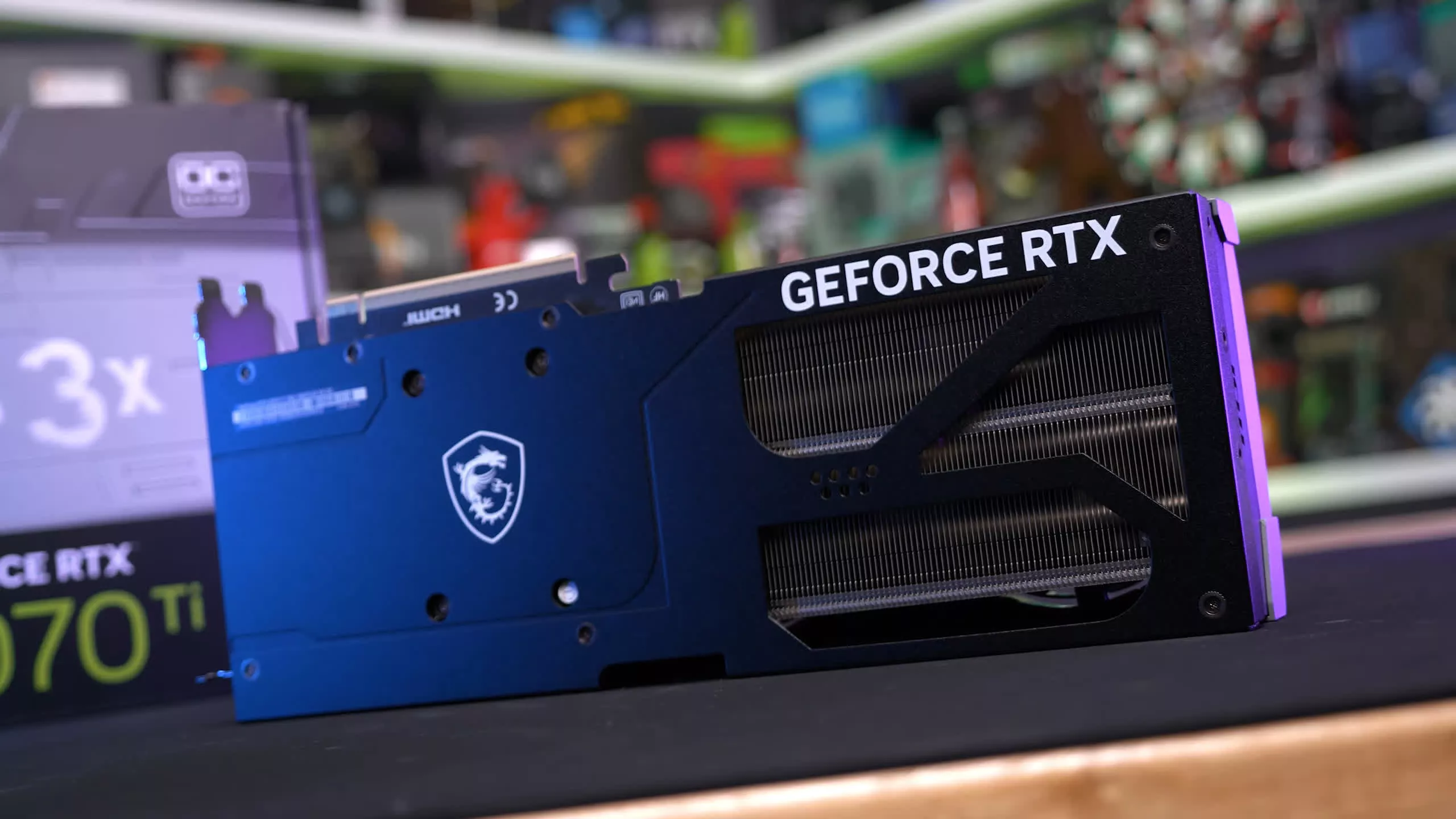
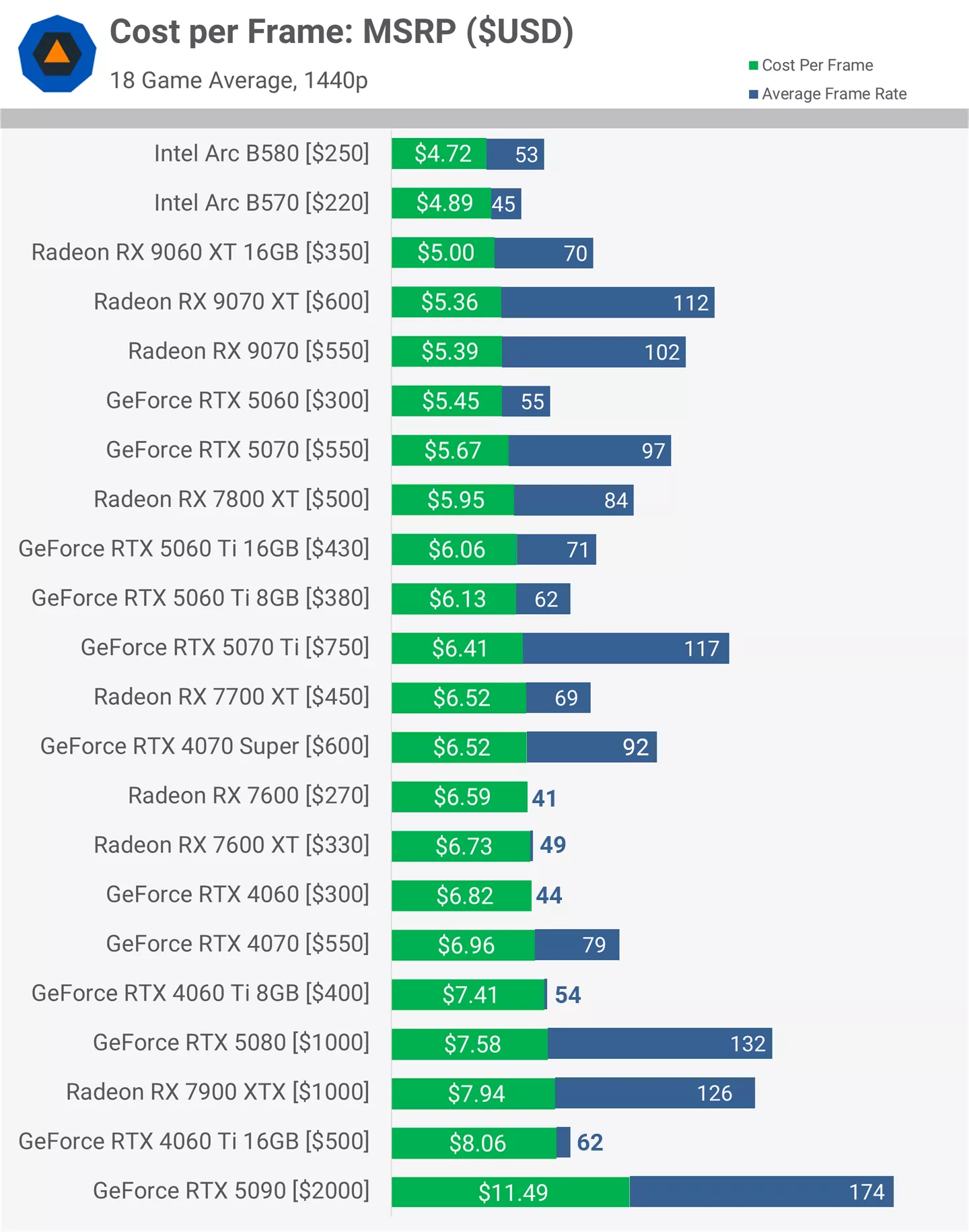
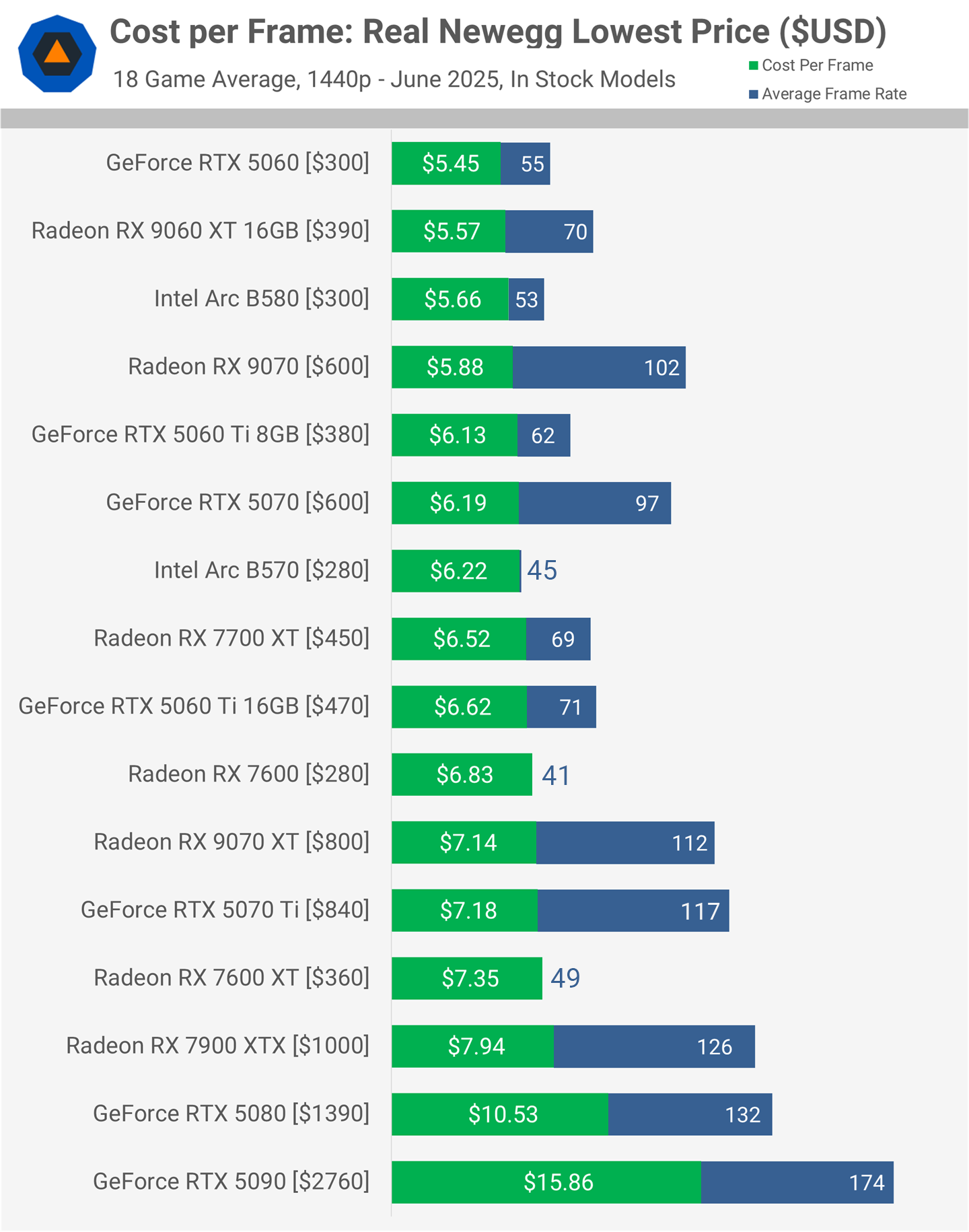
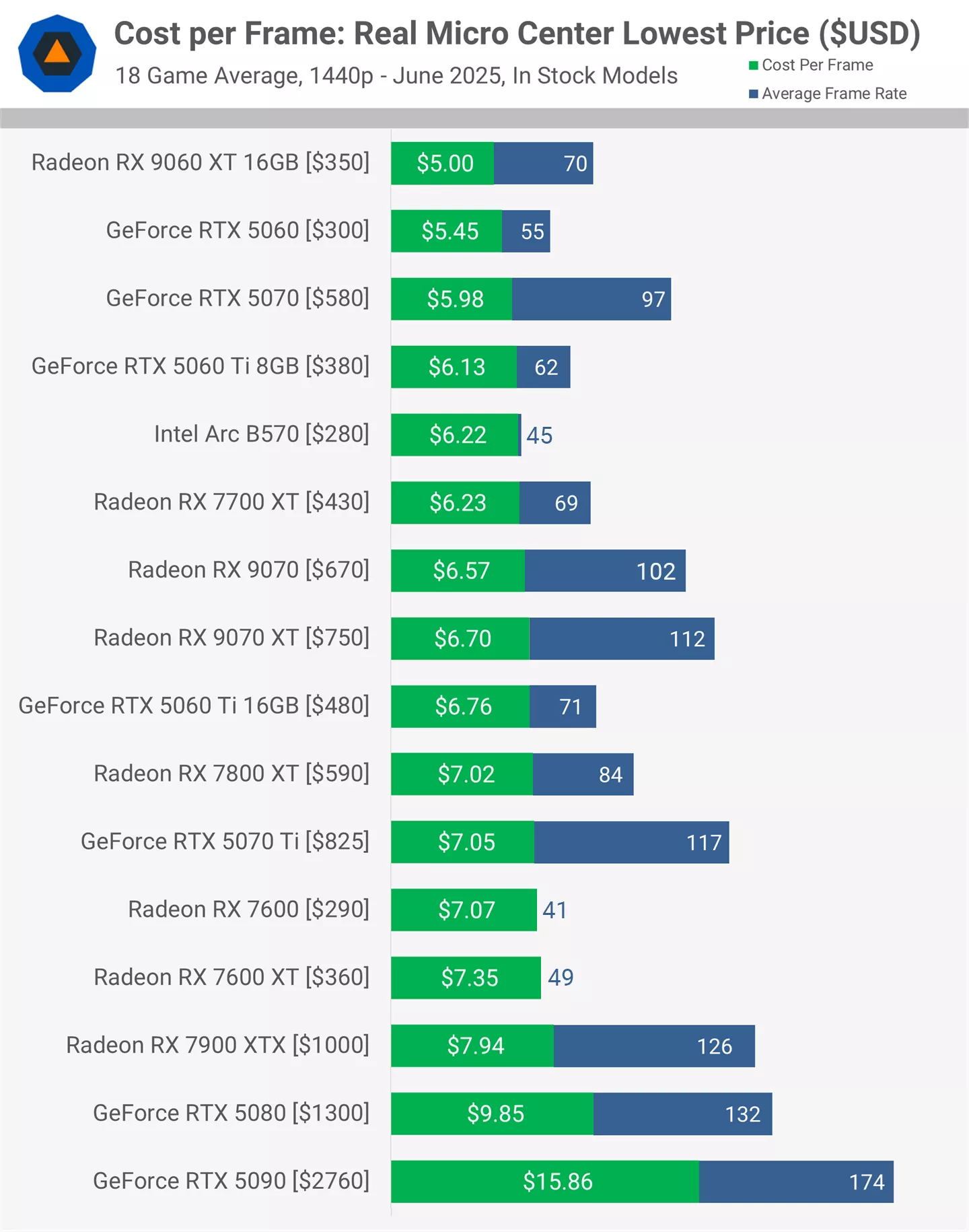
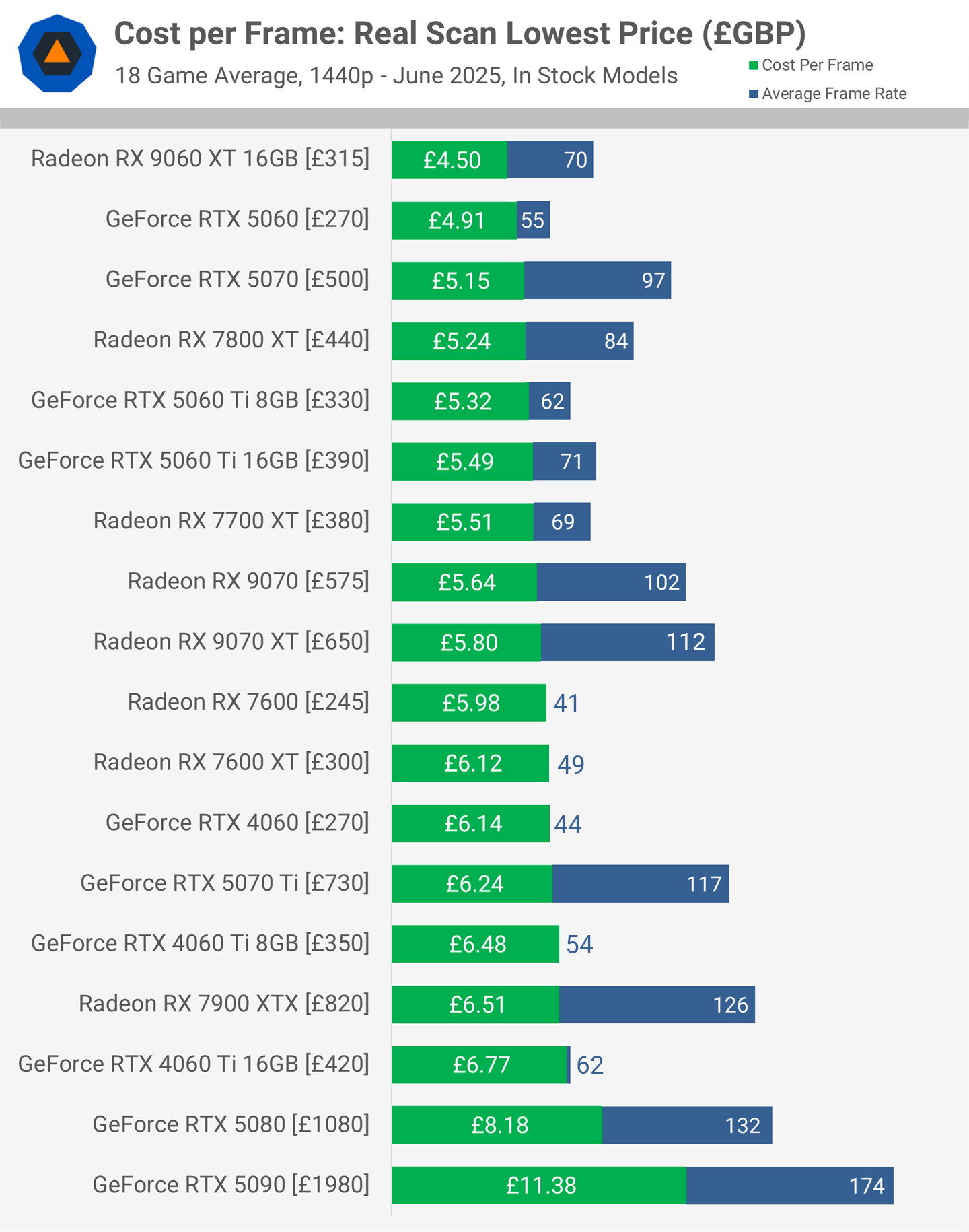
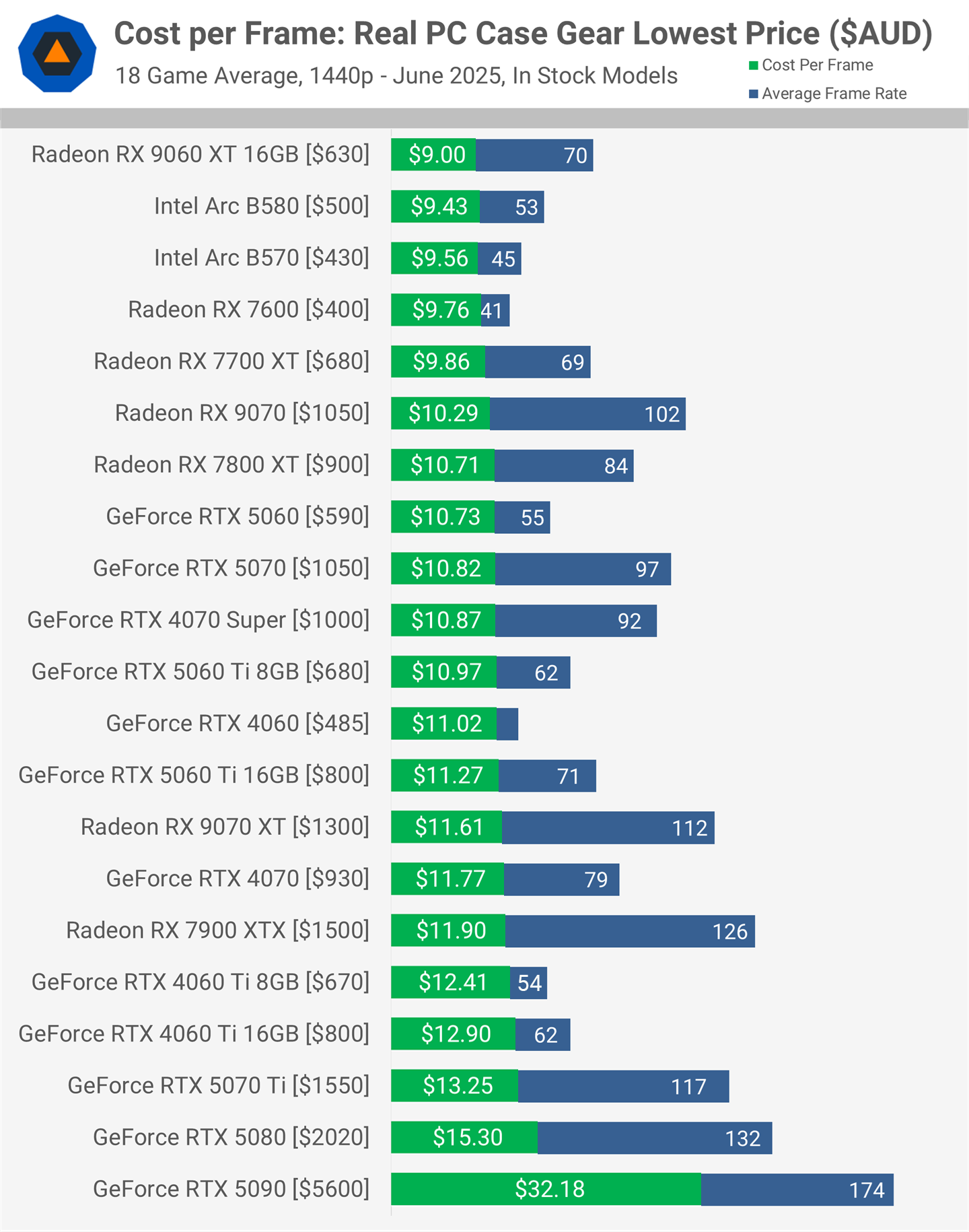
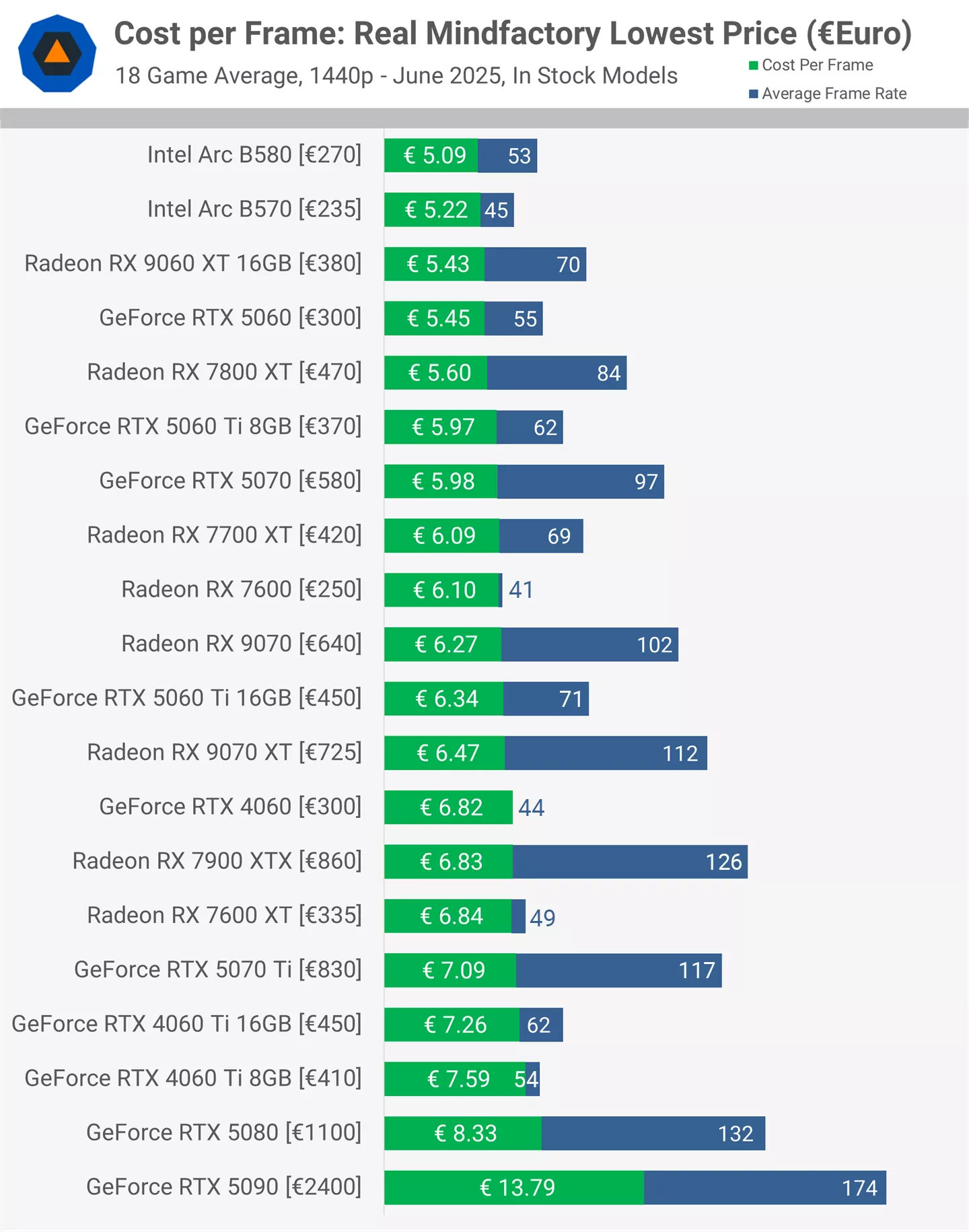
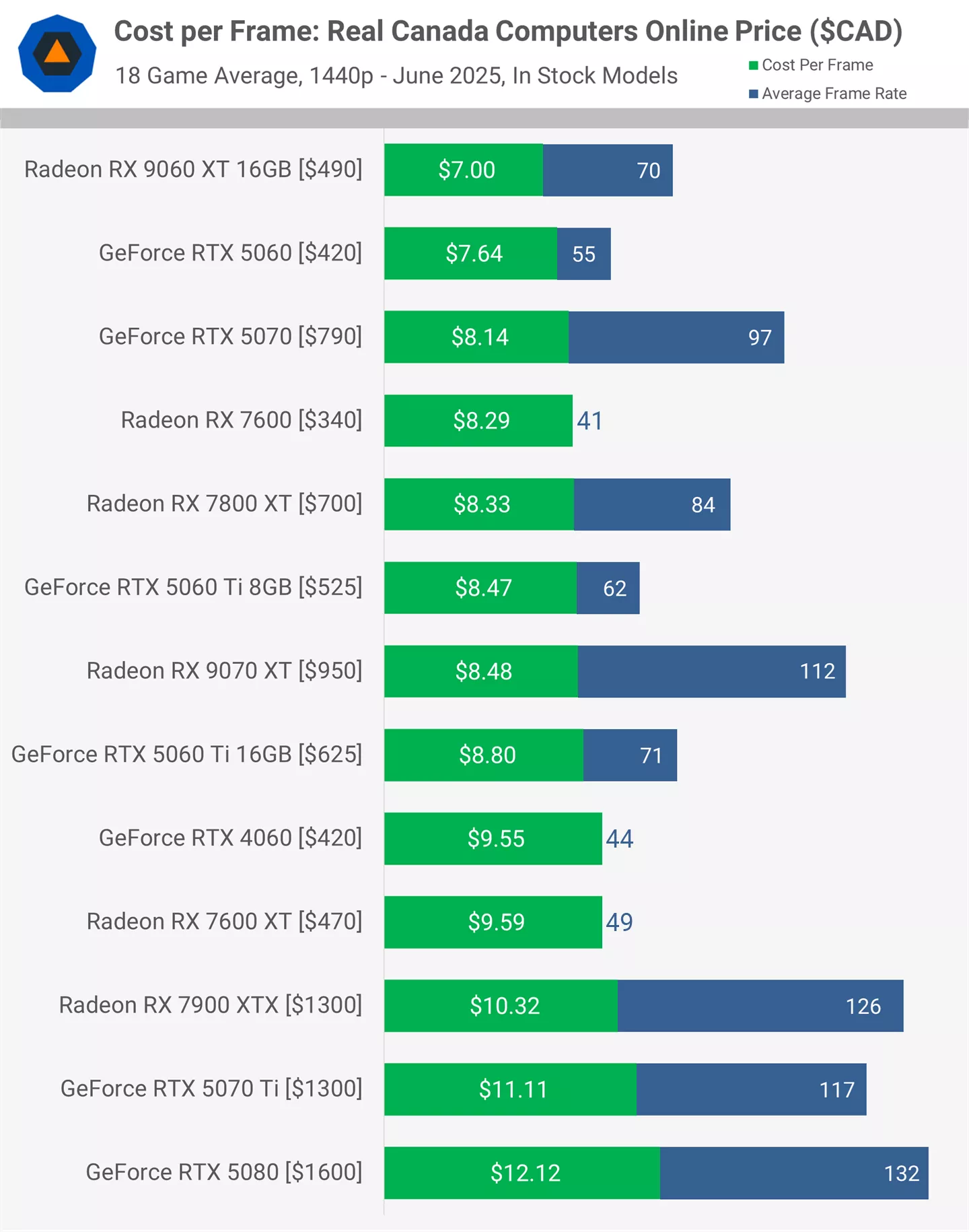
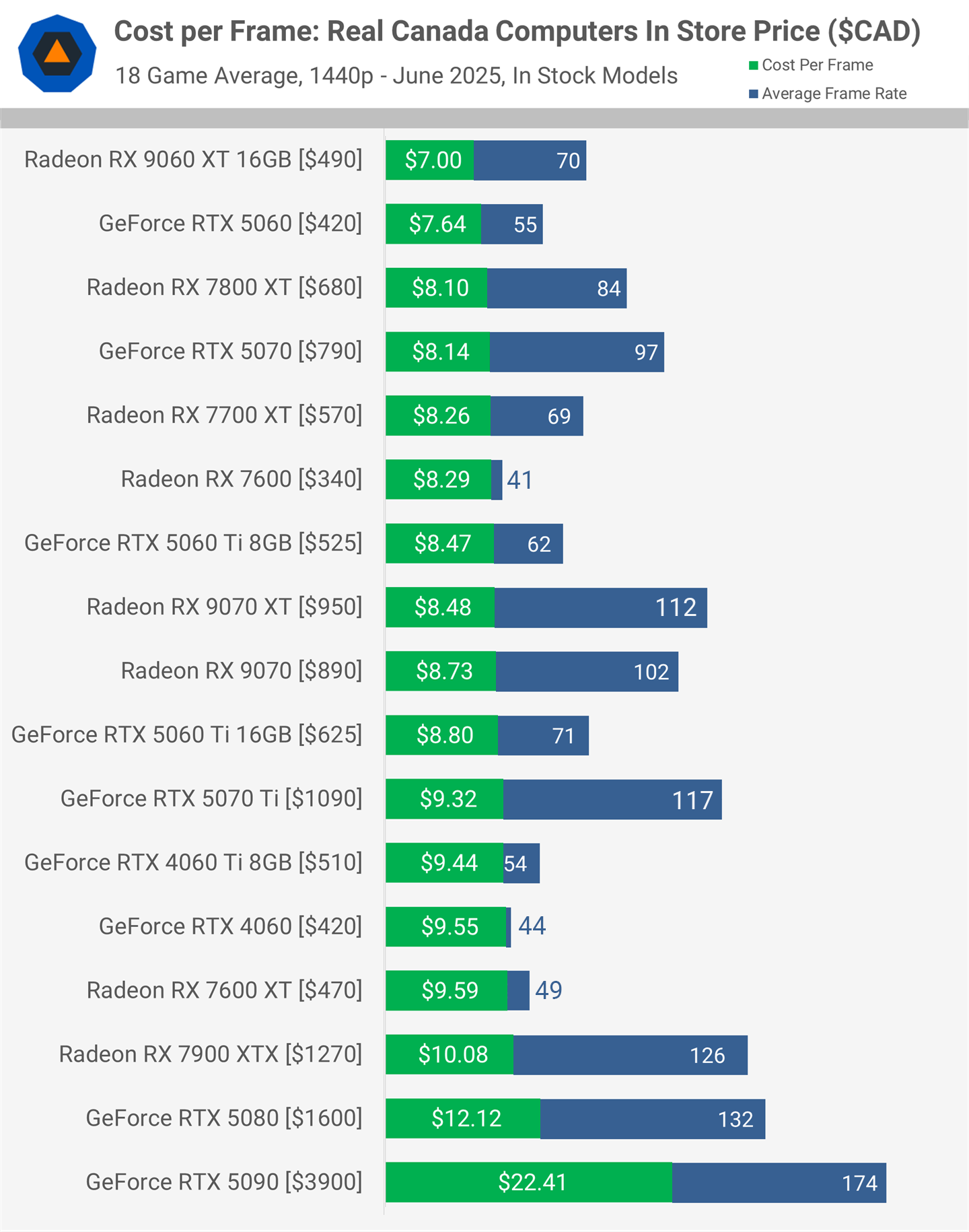
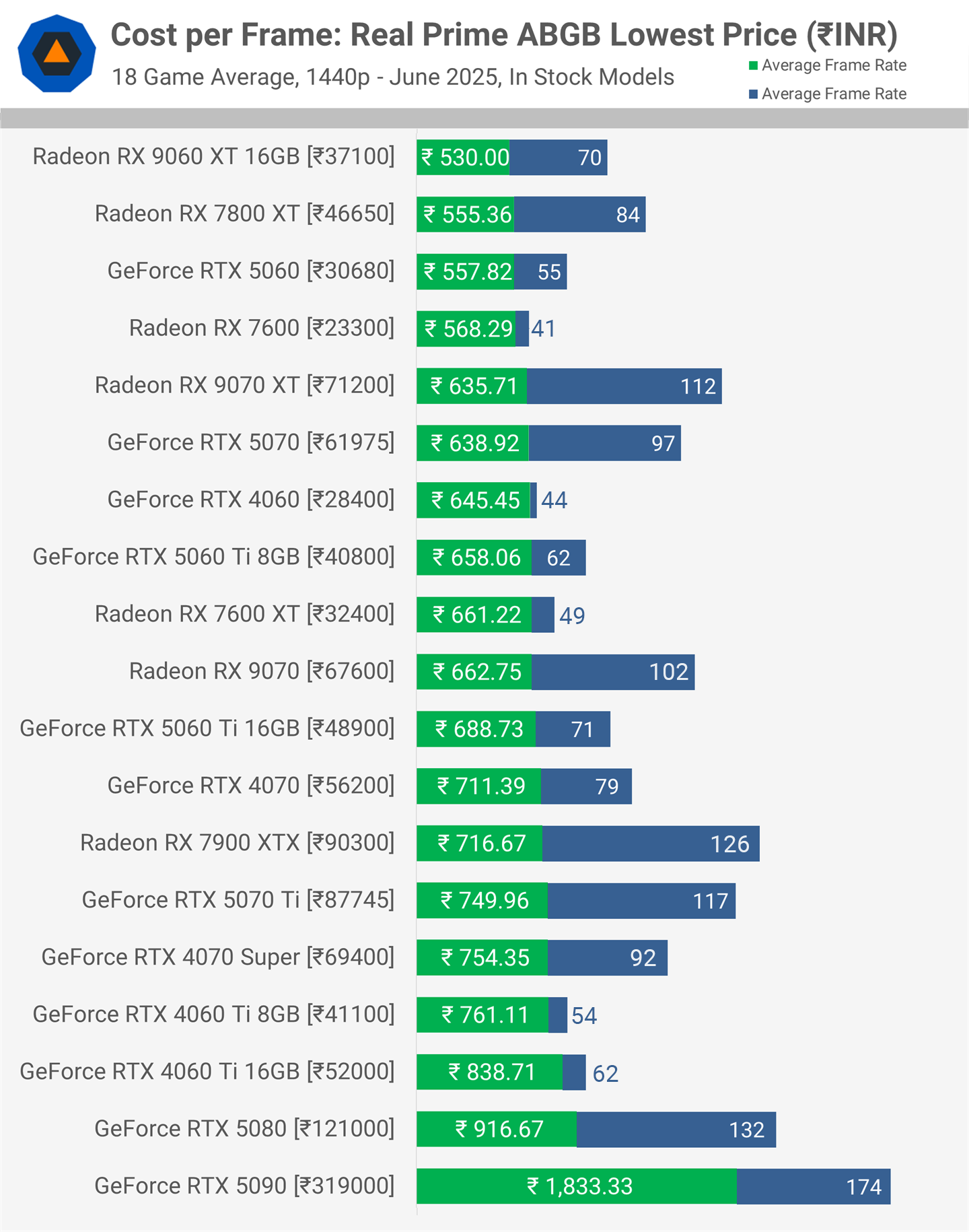
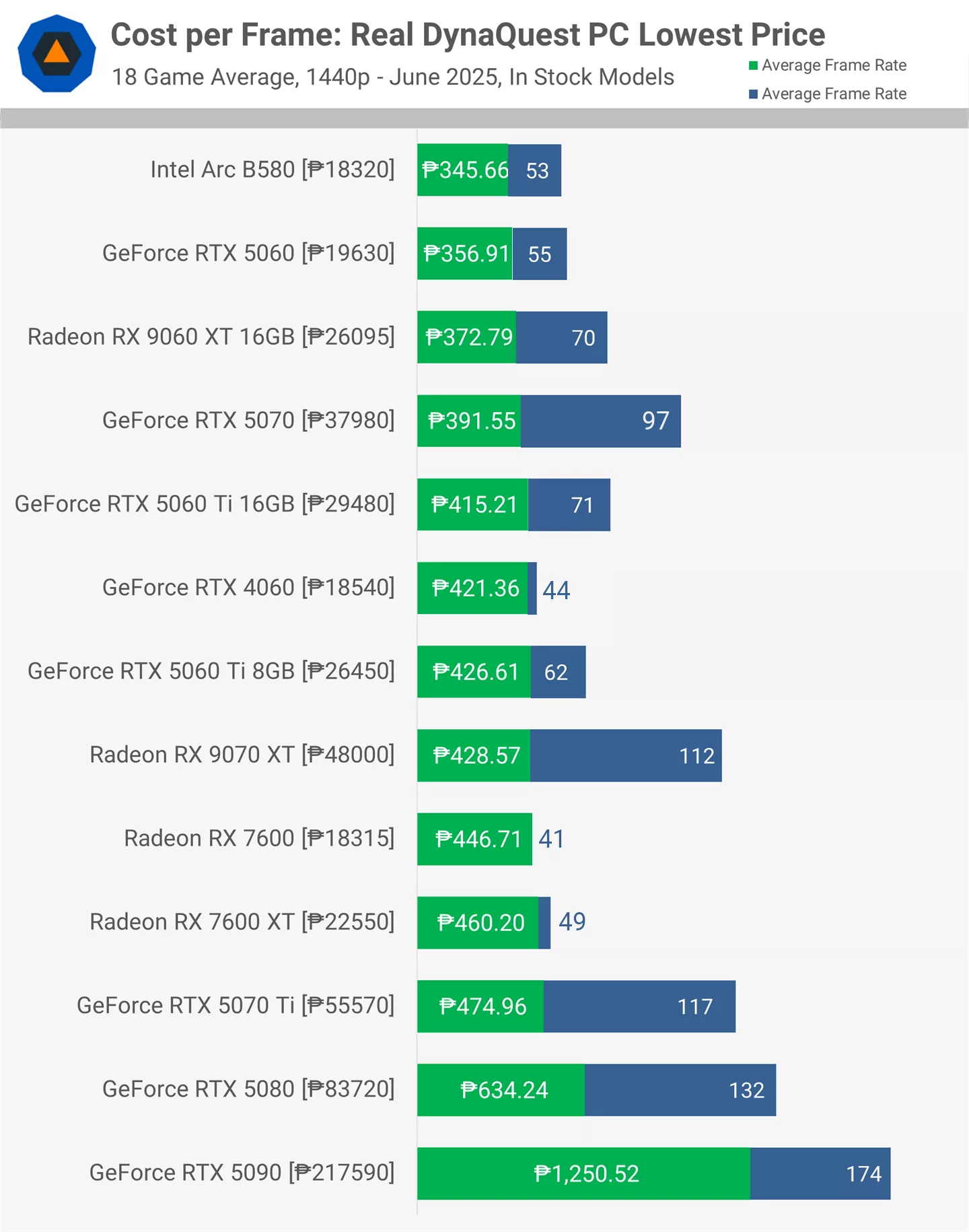
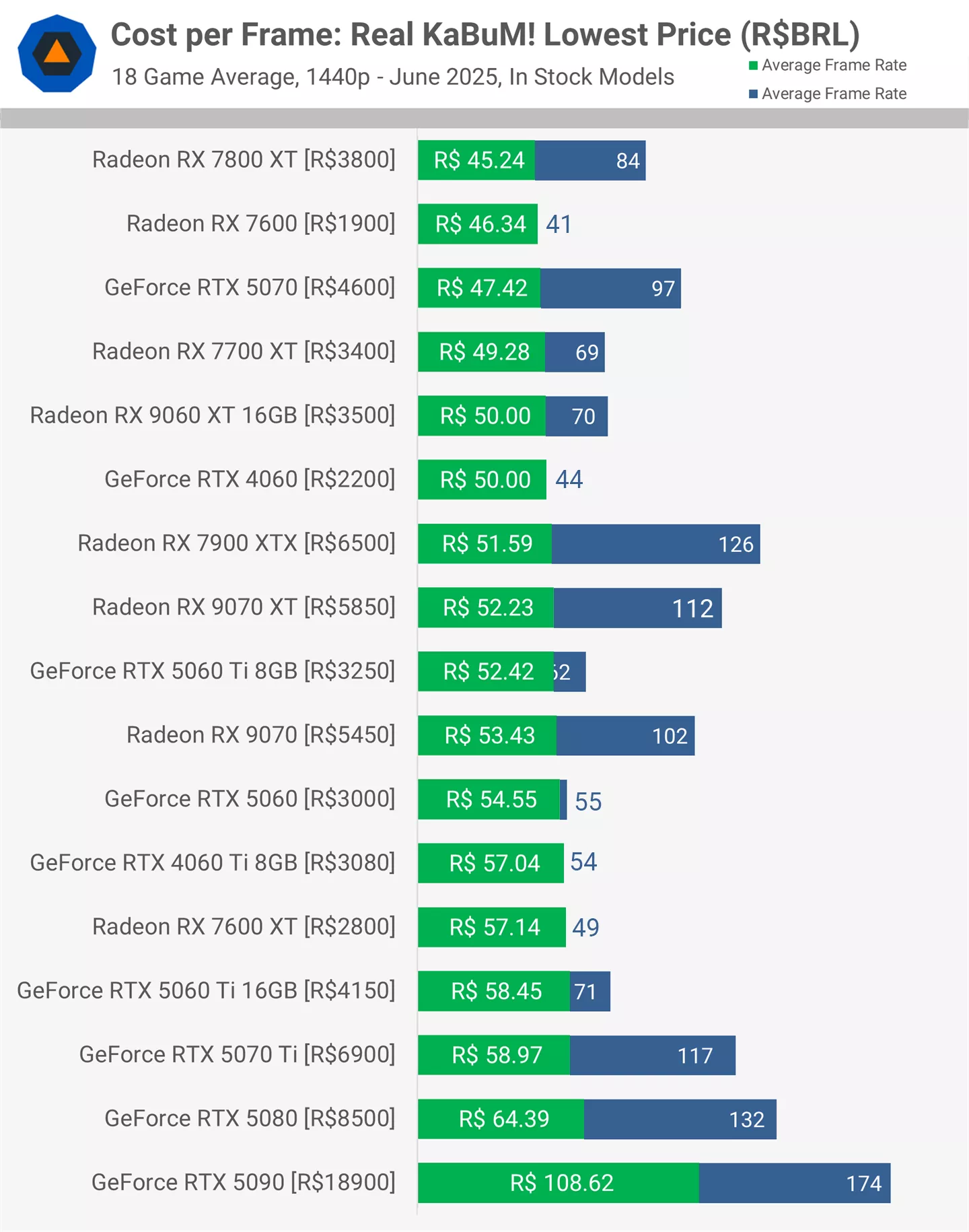
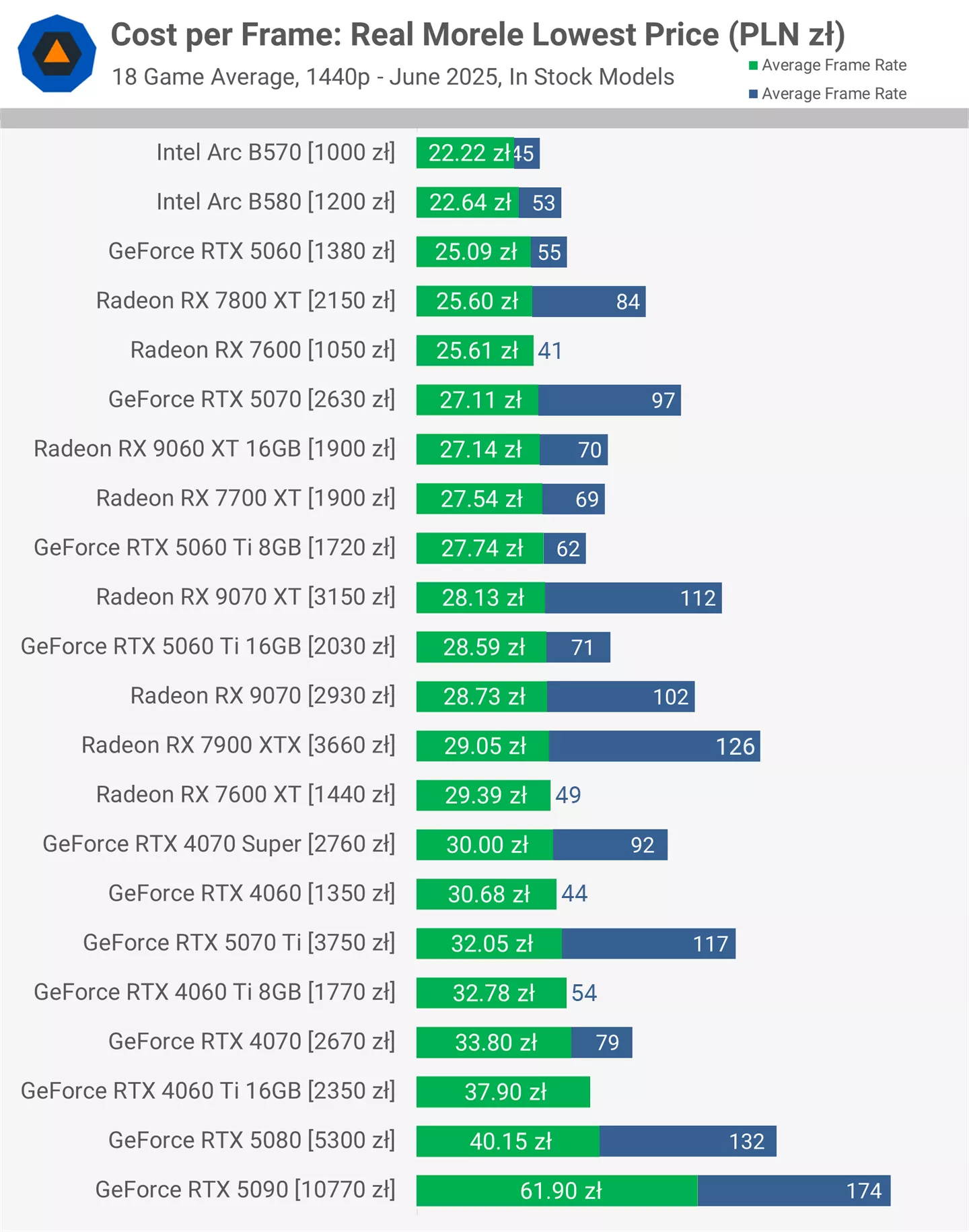
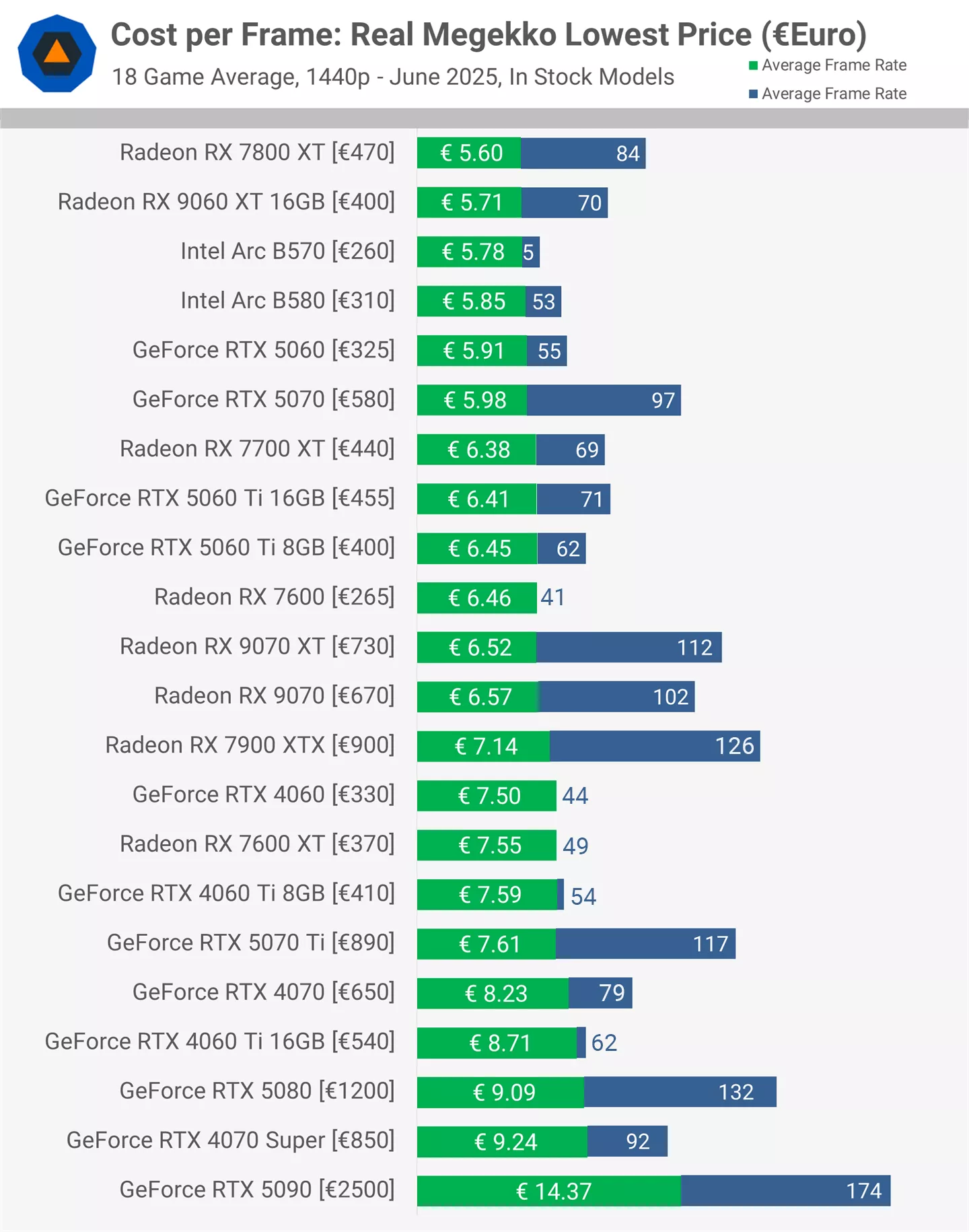
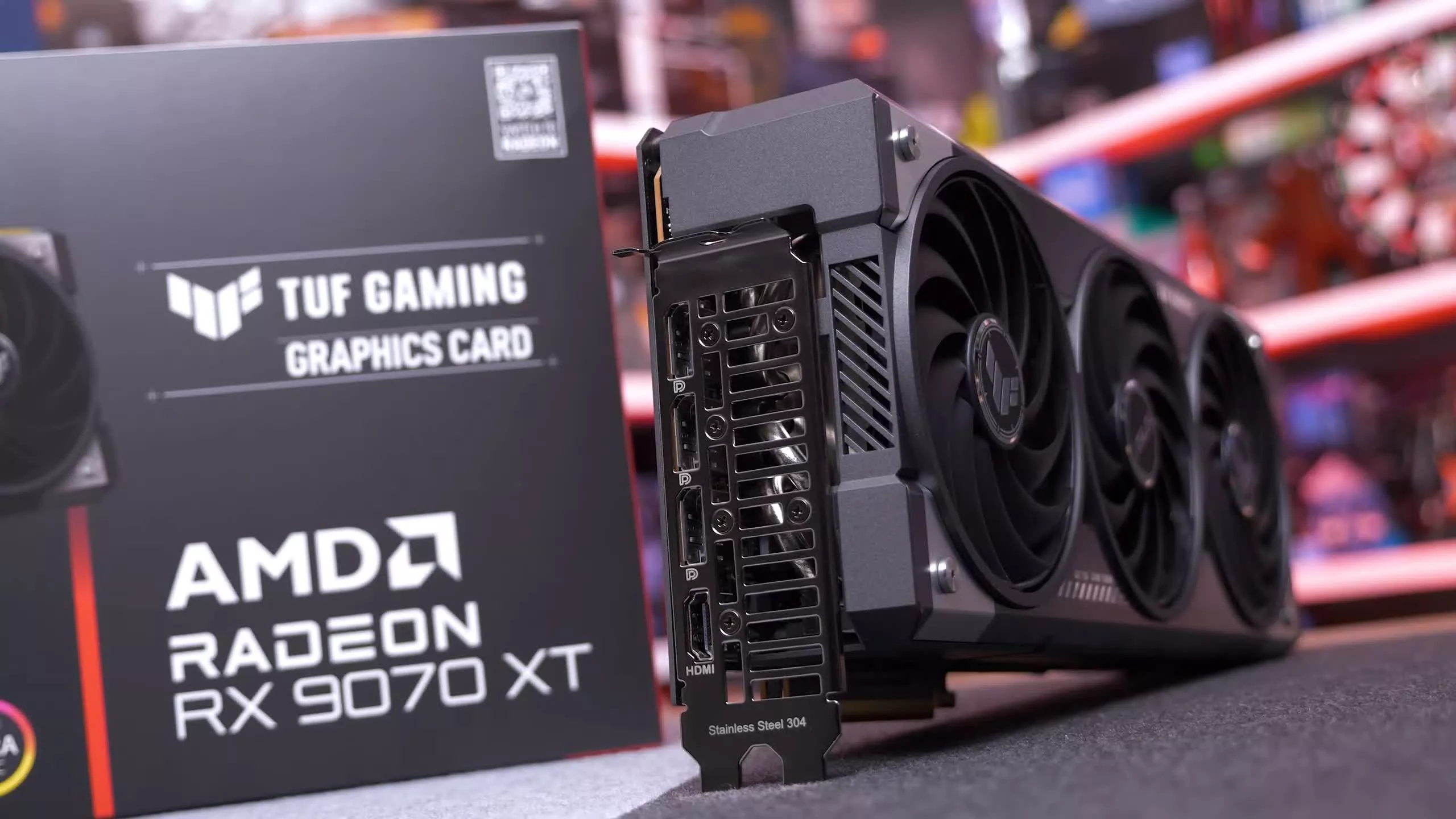
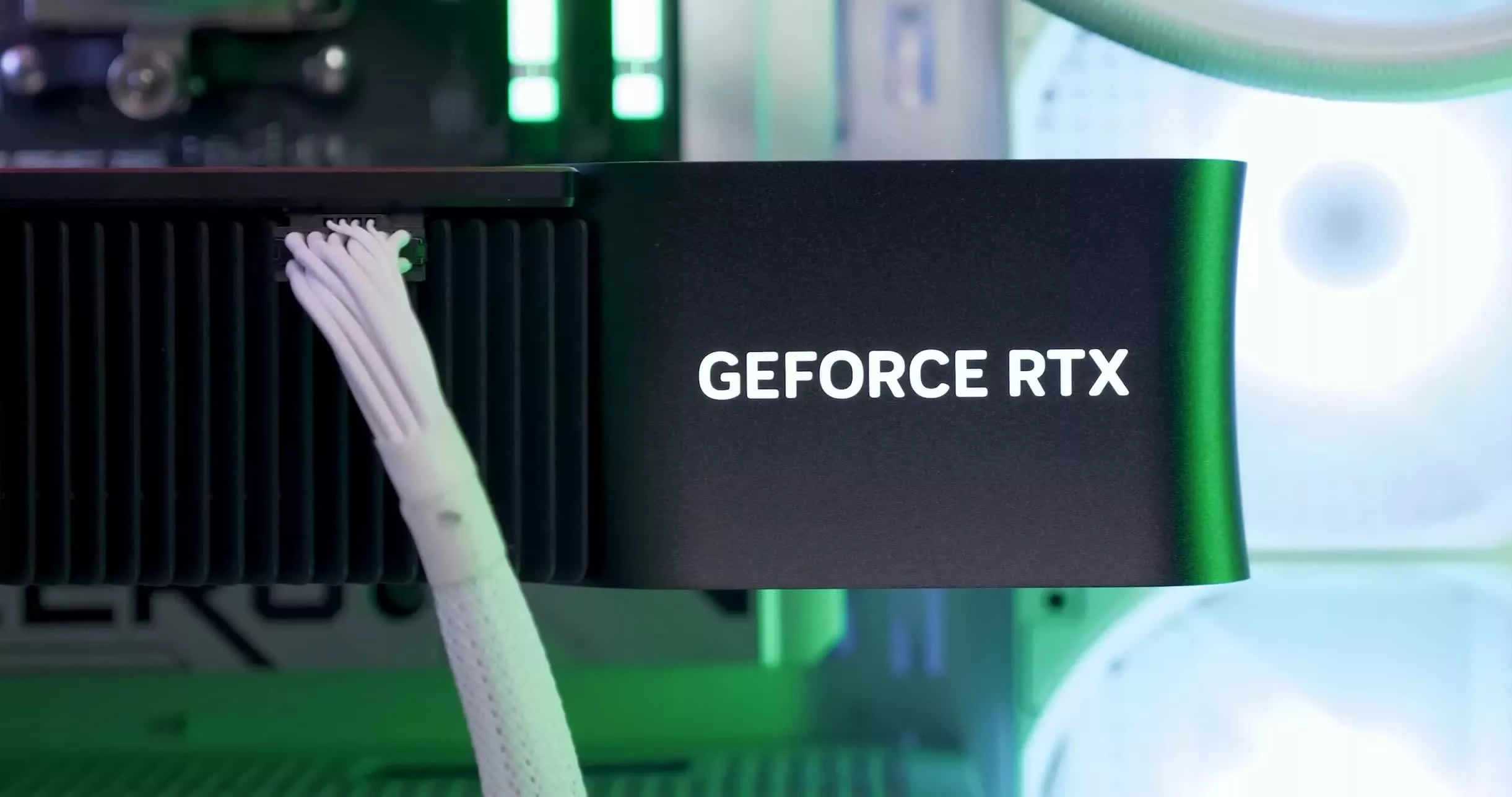
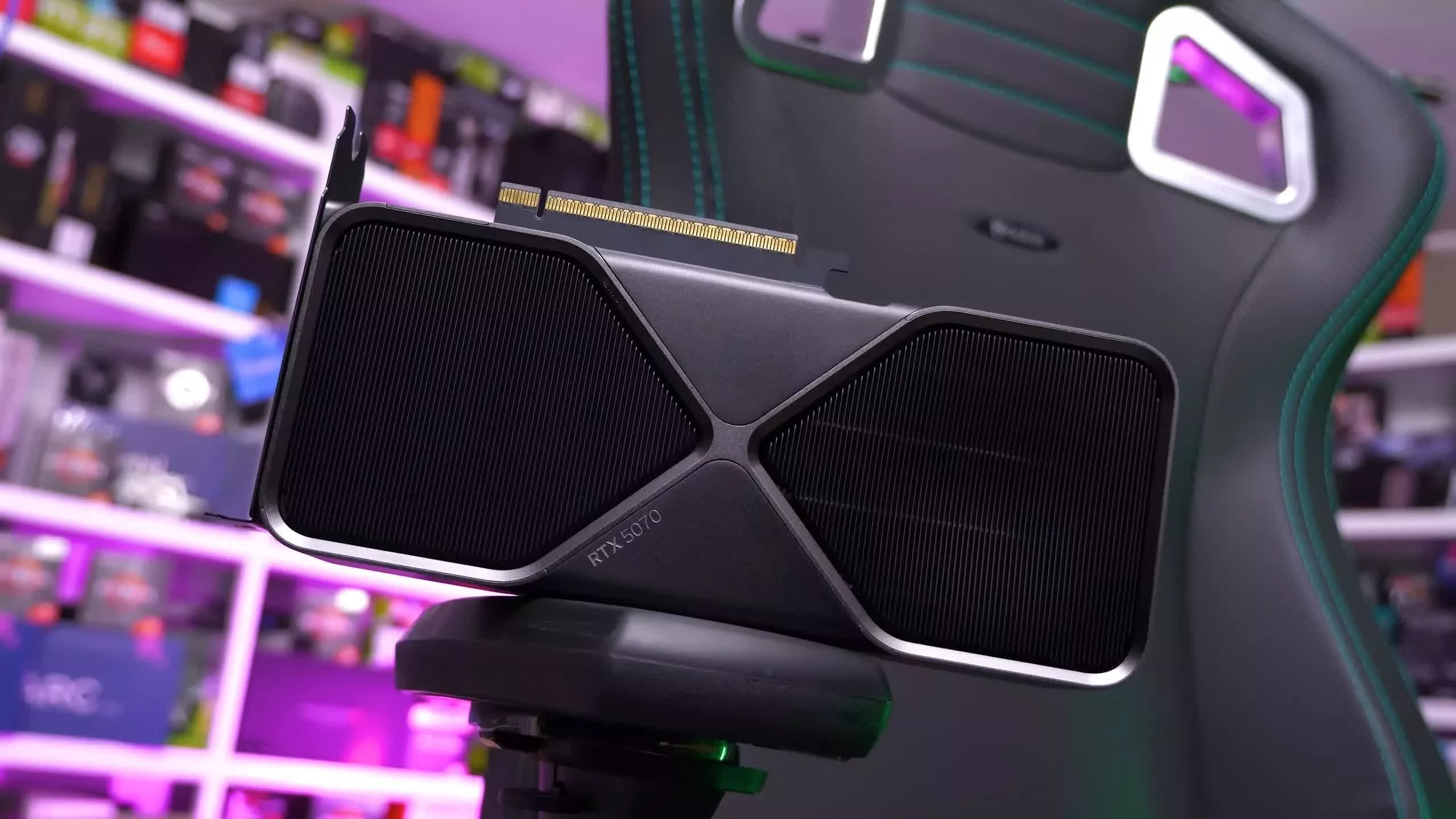
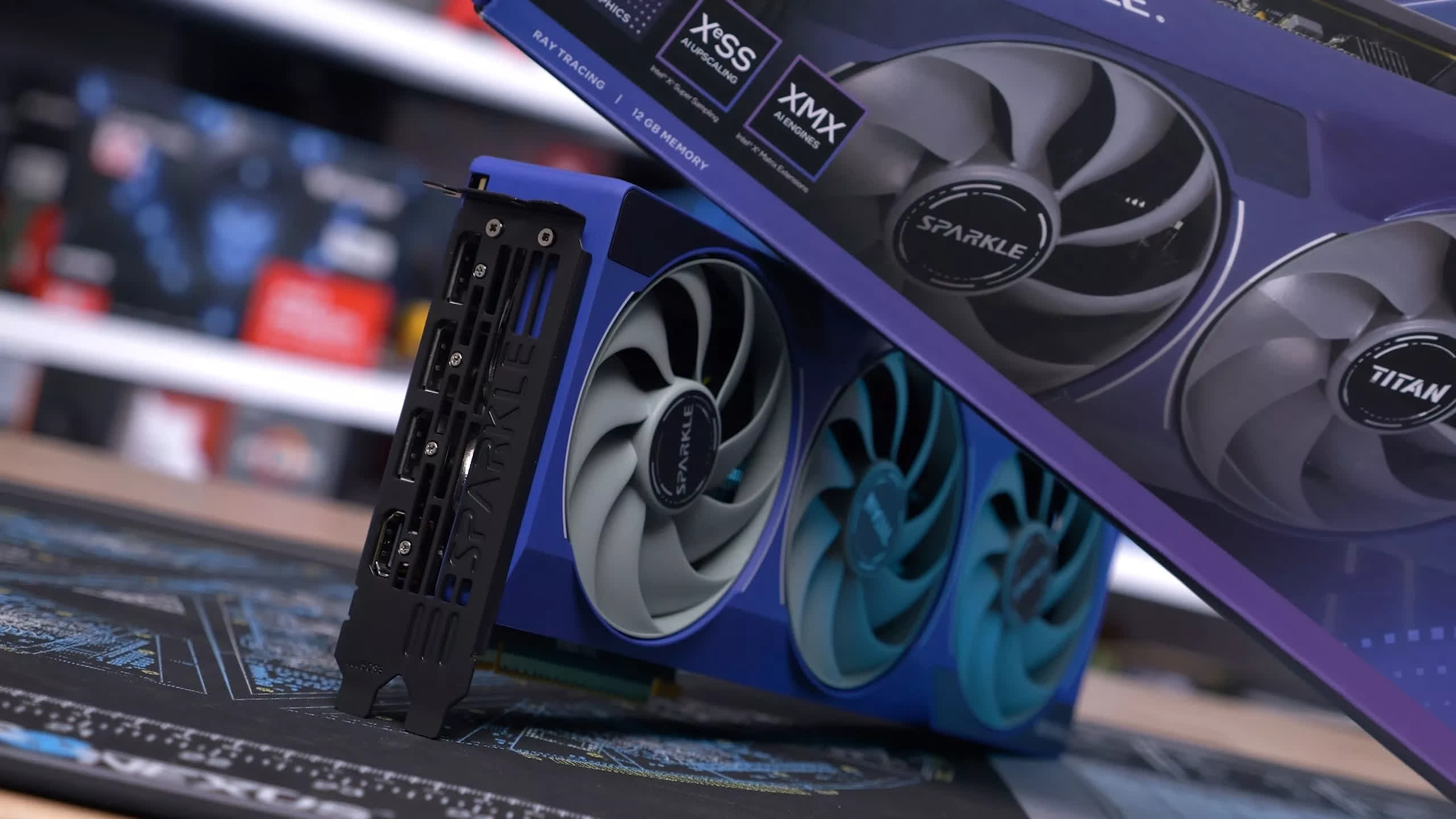
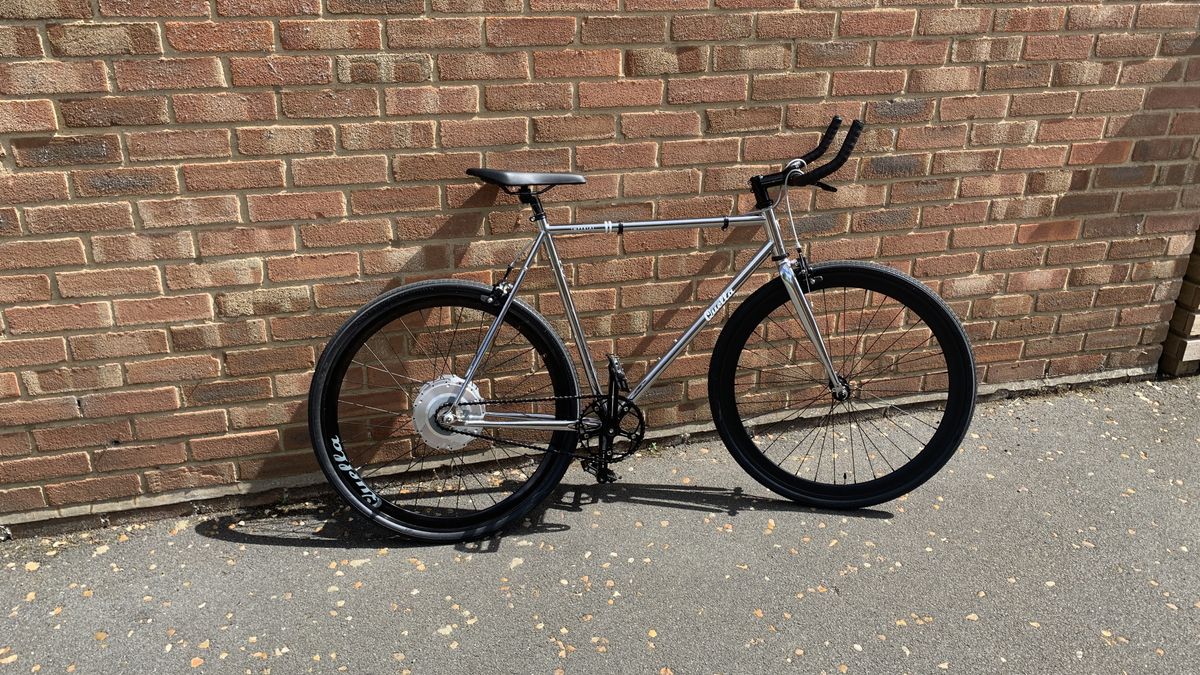

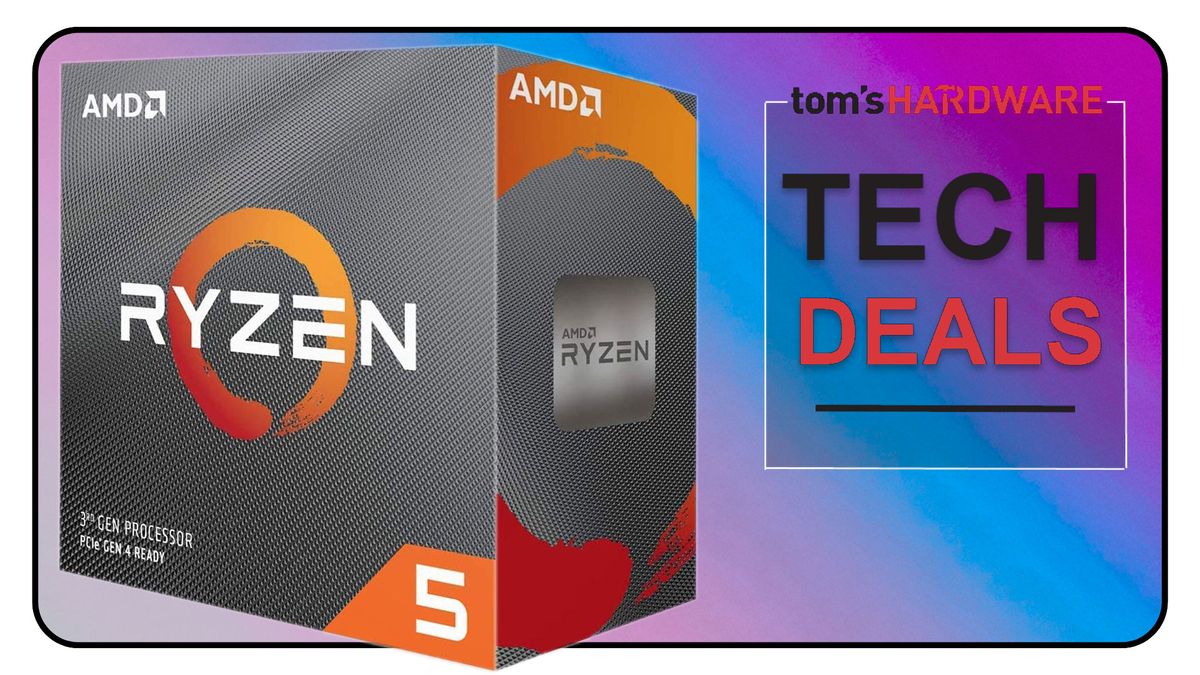






 English (US) ·
English (US) ·